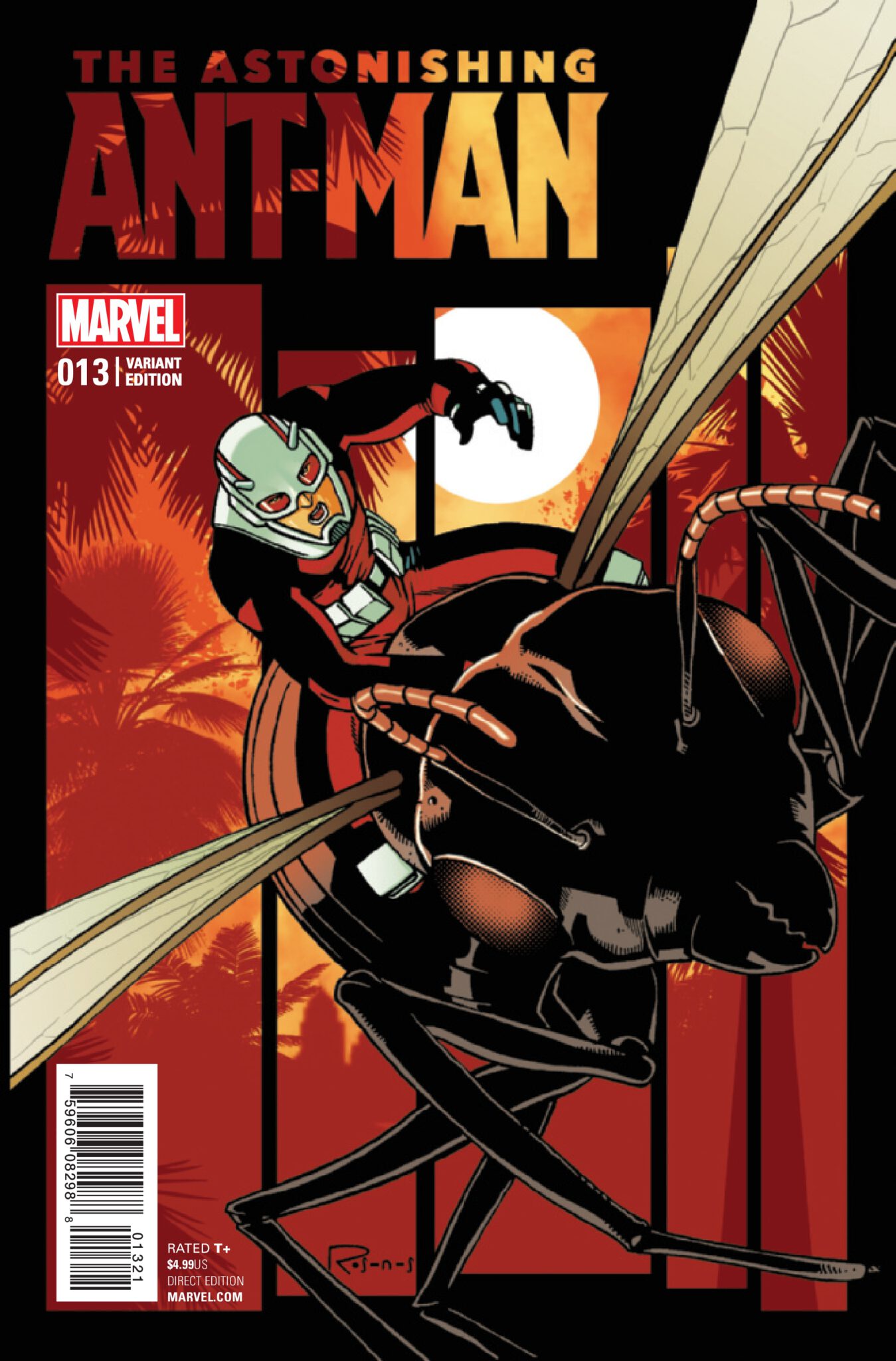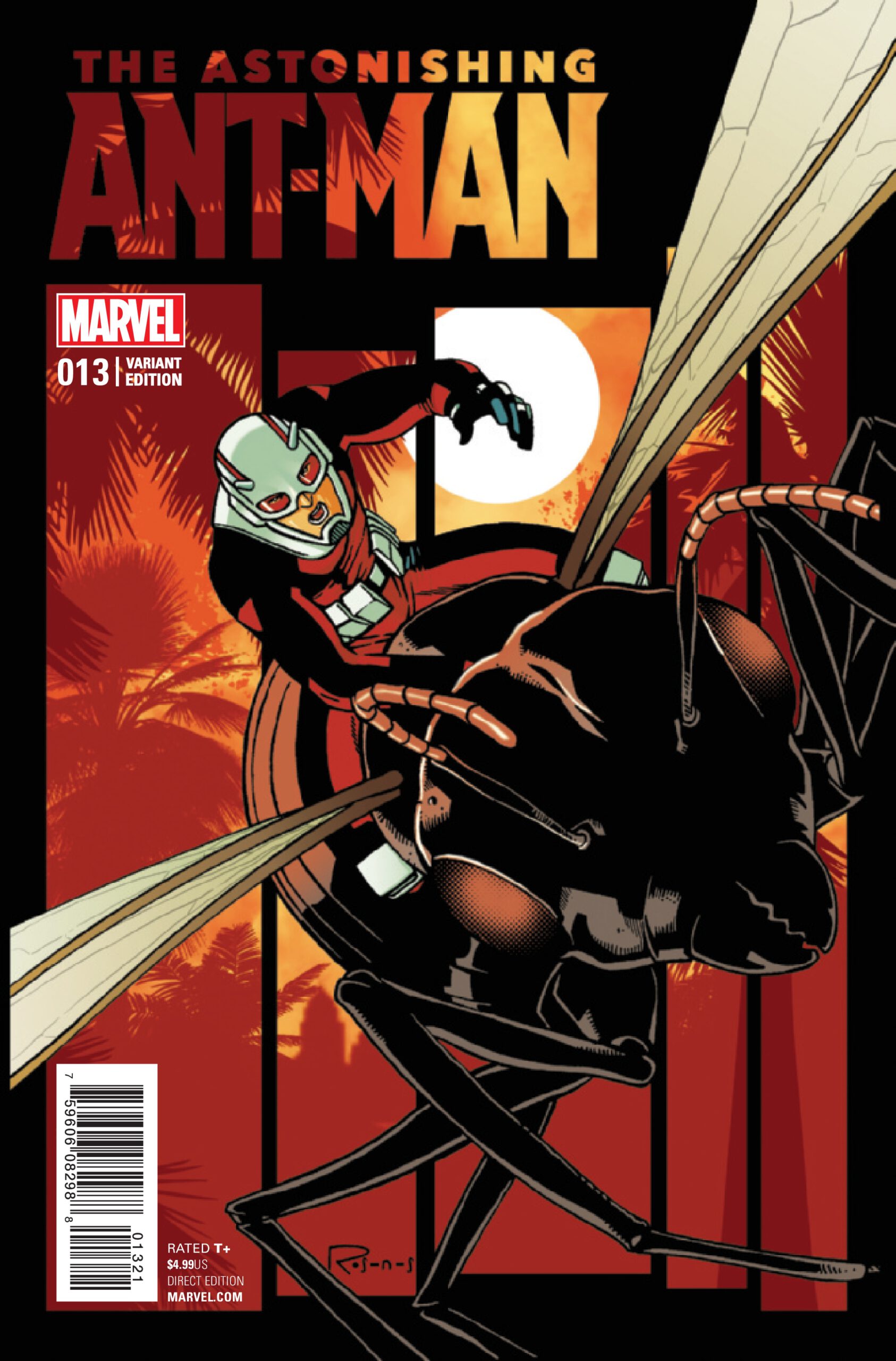The Law Is A Ass #426: Ant-Man Doesn’t Right The Wrongs Of His Trial
 I know you think you know where you are but you’re wrong. You’re 8-years old again, sitting in your dentist’s waiting room with a copy of Highlights for Children, looking at the “What’s Wrong?” puzzle on the back cover. Only this time, instead of one large picture full of things that are wrong to find, it’s 150 pictures. The 150 pictures that made up The Astonishing Ant-Man # 13.
I know you think you know where you are but you’re wrong. You’re 8-years old again, sitting in your dentist’s waiting room with a copy of Highlights for Children, looking at the “What’s Wrong?” puzzle on the back cover. Only this time, instead of one large picture full of things that are wrong to find, it’s 150 pictures. The 150 pictures that made up The Astonishing Ant-Man # 13.
Scott Lang, the astonishing Ant-Man eponymoused in the comic’s title, was on trial for a crime his daughter committed in an act of rebellion. Guess she had grown past the “Bad Boy” stage. In order to protect his daughter, Scott confessed to her crime and now was on trial.
I’m assuming the prosecution’s case came in badly for Scott; it usually does when the defendant confesses. But I can only assume that, because the story didn’t actually show us any of the prosecution’s case. The story started by showing a string of defense character witnesses all called to attest to the fact that Scott was a good guy.
And here’s our first “What’s Wrong?” Scott confessed, remember? Well the thing about confessions is juries tend to believe them. A lot. When the prosecution’s case includes a confession, that’s pretty much, “The state rests.” The defendant could introduce character witnesses that he’d been canonized for driving the snakes out of Ireland and inventing Triple Stuf Oreos; he’d still be convicted. Scott’s entire defense of character witnesses was pretty much the worst defense this side of, “Yes, the defendant ate his victims; but he didn’t eat them raw.”
If that wasn’t bad enough, Scott’s first two character witnesses were Machinesmith – a super villain who said Scott was a good boss, but so were his former employers Arnim Zola and Baron Zemo – and Grizzly, a super villain who said Scott was the only guy who would give Grizzly a chance after he committed all those murders. Which brings us to “What’s Wrong?” deuce, there’s no advantage in calling Nazi employees or mass murderers as character witnesses.
During a recess, Scott was sitting in the hallway. A correction officer was sitting right next to him, like about a foot away. That’s when the prosecutor, Janice Lincoln, approached Scott and told him the reason she left a lucrative civil practice in New York in order to prosecute Scott was Pym Particles, those wondrous things Hank Pym, the first Ant-Man, used to shrink to insect size. See, Janice was a lawyer who moonlighted as a super villain. (Yes, there is so a difference!) She resented the fact that her Beetle identity was the only insect-named character who couldn’t shrink. She told Scott she was going to bring his Ant-Man costume into court for a demonstration and if he provided her with Pym Particles from it, she’d throw the case.
And we have “What’s Wrong?” the drei heaves. No, not that a prosecutor offered to throw a case for a bribe. It happens. What was wrong is that no prosecutor would offer to take a bribe while talking loud enough to be heard by a defendant who was four feet away when a corrections officer was within earshot!
“What’s Wrong?” may the fourth be with you happened when the prosecution presented its demonstration with the Ant-Man costume. No, not the fact that the prosecution called the defendant as a witness. I assume Scott agreed to waive his Fifth Amendment as part of the bribery deal. It’s the fact that the prosecution was allowed to do this after defense witnesses had testified. The prosecution would have rested its case before the defense called its witnesses. The prosecution wouldn’t be able to re-open its case to put on new substantive evidence.
Now this being a comic book that had gone twelve pages without a fight it was about time for the super villains who wanted revenge on Scott to attack the courtroom. Can you guess what happened on Page 13?
Nine pages of fight scene in the courtroom with the judge and jury present later, the villains were defeated and the trial resumed. Which is “What’s Wrong?” the fifth – a fifth being what I need about now. Ant-Man just saved the lives of the judge and jury from some super villains. There isn’t a judge who wouldn’t declared a mistrial and then disqualify both himself and the jury from the case for the reason that Ant-Man just saved their lives. And that would tend to prejudice them in Ant-Man’s favor.
So trial resumed. Janice Lincoln told the court that she and the defendant had reached “a perfectly reasonable, totally illegal [emphasis mine] deal” which the defendant just broke so the prosecutor wanted to get back at him by calling her final witness and convicting him. And we have “What’s Wrong?” six in the city, the prosecutor just admitted in open court in front of a judge, jury, and court reporter that she accepted a bribe.
The fact that Janice called a witnesses after the defense had put on its case is not our next “What’s Wrong?” Prosecutors can’t put on substantive evidence after they’ve rested their case. But they may put on rebuttal witnesses; that is witnesses called for the specific purpose of rebutting evidence offered in the defense case. These witnesses don’t offer substantive proof of the defendant’s guilt, they poke holes in the defense case.
“What’s Wrong?” seven come eleven (don’t worry, we aren’t actually going that high) happened when Janice called Scott’s ex-wife to rebut all the defense testimony of his good character. Janice proceed to lead her own witness by asking question after question which suggested its own answer. However, Janice soon learned she could lead her horse to the Kool-Aid but she couldn’t make her drink it. Because Scott’s ex testified about how wonderful Scott truly was and what a good father he was.
After that turn of my stomach – err events – the jury found Scott not guilty. No, that’s not “What’s Wrong? the eighth, man. I said the jury was probably prejudiced in Scott’s favor after he saved their lives from the super villains. I was right.
I mentioned in the last column that over thirty years ago “The Trial of the Flash” storyline lasted two years and made lots of mistakes. “The Trial of Ant-Man” lasted only two issues but I’ll bet it made about as many errors in those two issues as “The Trial of the Flash” made in its two years. Any takers?













